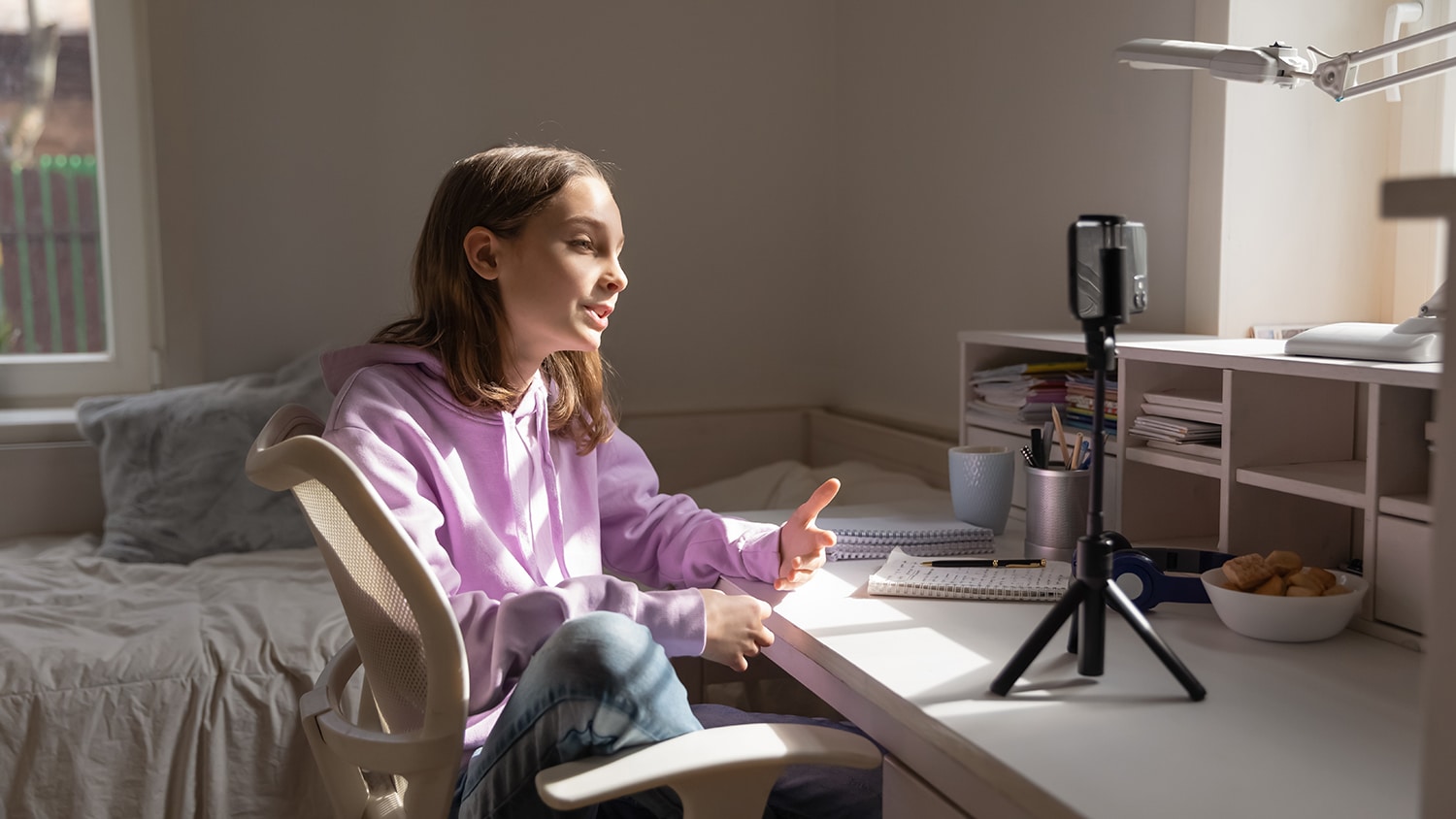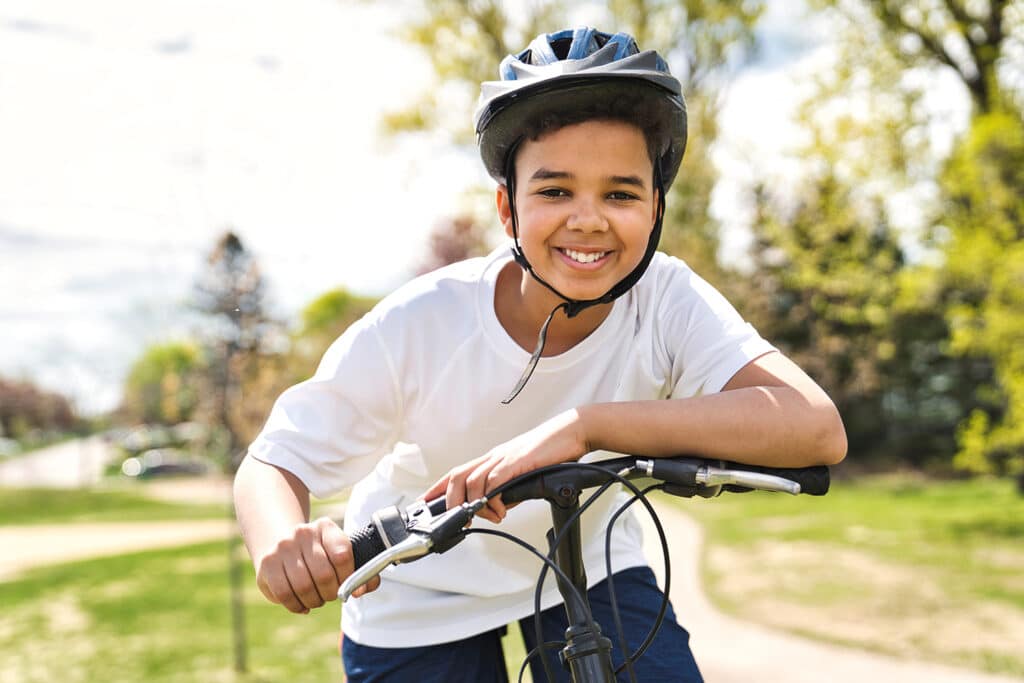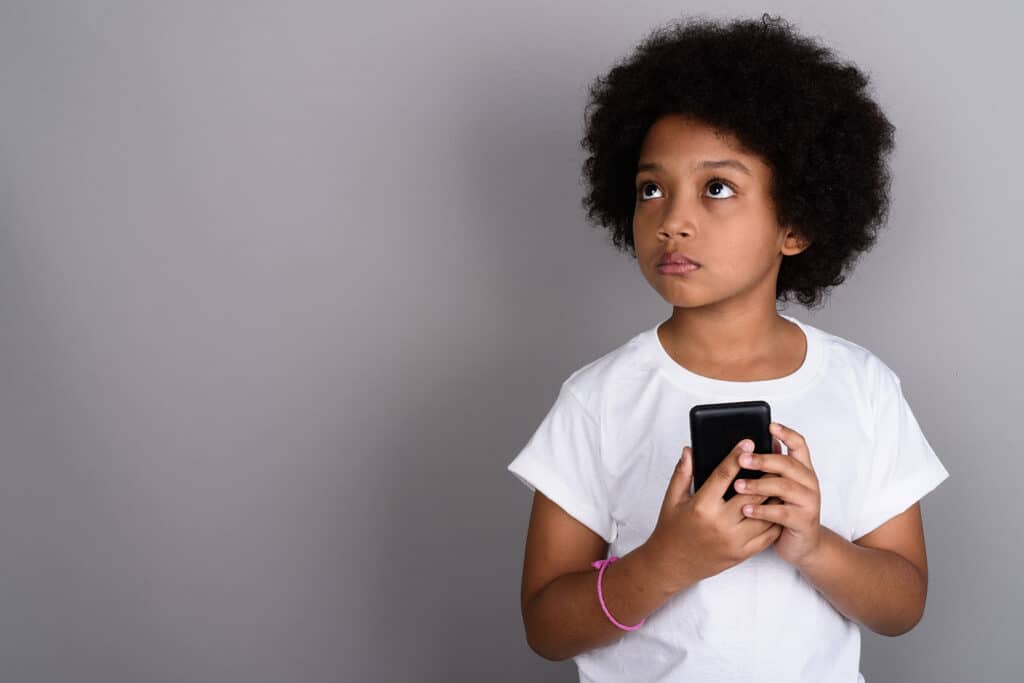Digitally literate children can better use digital technologies to enhance their lives.
Digital Citizenship does not replace the citizenship of your birth, but it will make your child’s online activity more safe and productive.
They will be better protected against online risks, including internet predators and explicit content, and ultimately more capable of creating safe digital spaces.
Because of all the potential benefits, many parents want to help their kids become good digital citizens. However, digital citizenship is a vague idea.
So how can we teach this, and where do we start?

Digital Citizenship for Kids
Helping kids become responsible digital citizens requires more than a single lesson or online course (although great ideas!).
Good digital citizenship is a series of habits and a way of life. It requires ongoing conversations, consistent effort, and regular accountability.
A good place to start is with the International Society of Technology in Education’s (ISTE) 5 competencies of digital citizenship. This is a list of the five most important characteristics of good digital citizens: inclusive, informed, engaged, balanced, and alert.1
Creating a plan centered on developing these skills can be helpful, especially if you are looking for a simple, flexible outline that the whole family can be involved in.
Other great resources include Common Sense Media’s digital citizenship lessons and ISTE’s website.
Teaching Digital Citizenship
Here is a brief overview of the five competencies and some activities you can implement today to help your kids become proficient in digital citizenship.

Becoming inclusive
It’s part of human nature to think in terms of “us” and “them.” Families need to consciously make efforts to develop inclusivity if they want to overcome these tendencies.
One way to do this is to find ways to expose your children to different cultures. You can do this through movies, TV shows, vacations, trips to museums, or visits to different churches.
Pay attention to the example you send your kids as well. For instance, do you talk about people with different opinions in negative ways?
Nobody’s perfect, and that’s okay. We can admit it to our kids when we mess up, apologize as necessary, and keep trying.
Finally, help them develop empathy for others. Talk about a time when they were excluded from a group. Ask about how they felt.
Practice inclusivity by role-playing what they’d do if one of their peers needed a friend.

Role-Play Inclusion
Practice various role-playing situations to help children develop inclusivity. Start by sharing some ideas to demonstrate what kids can do.
For instance, educate them on how to respond if they notice someone is being bullied at school.
Consider responses like: “Hey, that’s not nice. How would you feel if someone did that to you?” “You guys are being mean. Quit bullying her.” “What did he do to you? Stop picking on him; it’s not cool.”
After being shown, let your child have a turn standing up to the “bully.” Do it a couple of times so kids can try out different phrases and make sure the information sticks.
You can also try out how to respond if bullying occurs in a group chat, if someone is sitting alone at lunch, or if there is a new kid at school.
Becoming informed
Encourage your child’s natural curiosity by supporting their interests, learning together, and answering their questions.
To do this, parents can steer kids toward media that teaches rather than entertains.
Give kids opportunities to learn about what is happening in your community, nation, and world.
Provide them with age-appropriate news articles, videos, and posts to explore. Talk about what your children are reading and why being an informed citizen is important.
As parents, we can also model this characteristic by seeking ways to stay informed. Join the Gabb Family Resource newsletter to receive regular updates on issues facing parents today.

Current Events
Sites like AllSides.com allow you to choose an age-appropriate current event your kids would enjoy learning about. Read a suggested article about the topic from the political left, right, and center. Talk about determining if you can trust a news source and the benefits of looking at issues from multiple perspectives.
Becoming engaged
Look for ways to help your children do more than passively consume content online.
There are many opportunities to create, build, practice, and learn online. Kids who limit themselves to scrolling, watching, and “liking” can miss out on so much.
Support children in developing new interests like coding. This might mean expanding screen time to enable lesson completion and to encourage progress. Recognize that not all screen activities are equal.
Parents can also provide opportunities for children to explore digital skills. Instead of buying a new video game, give children access to Adobe Photoshop and online tutorials.

Terms of Engagement
Here are some ways to help your child go beyond passive digital activity and become more active online:
- Compose a family theme song using a music production app, such as GarageBand
- Learn to edit family photos on Adobe Photoshop
- Make donuts using a tutorial video on YouTube
- Research and create plans to build a home-made “rocket”
- Take a free online Adobe Illustrator course
- Write, direct, and edit a mini-movie
Becoming balanced
Creating a family media plan can be a powerful way to teach balance. A family media plan outlines a family’s expectations about technology use. It answers when, where, how, and for how long family members can use digital technologies.
Family media plans are most powerful when the whole family is involved in their creation.
If parents solely dictate all the time limits and appropriate uses of technology in the family media plan, it can still be a useful tool for setting expectations. However, this approach is more likely to teach obedience than to help kids learn to be balanced.

Your Family’s Recipe for Healthy Technology Use
Make a batch of cookies with your children. Talk about the importance of each ingredient. Ask them what would happen if they put in too much sugar or forgot the baking soda. How would it taste?
Relate the cookie recipe to their lives. Brainstorm the “ingredients” that make up a happy, healthy life. Talk about what happens to the recipe if we put too much screen time in our day or consume explicit content.
Together, create your family’s “recipe” for healthy technology use—your family media plan. Afterward, enjoy some freshly baked cookies and milk!
Becoming alert
Being alert is all about being aware of your surroundings, noticing how your decisions affect your environment and identifying the dangers around you.
Parents can help their children become more alert by being present when their child is online.
While your child plays games or scrolls through their social media feed, consider asking them questions that will encourage awareness.
Questions like: What effect does this game have on you? How do your decisions about what to post affect others? How might a predator utilize this app? Do you see any suspicious behavior from anyone right now?

Gab While Gaming
Ask your child to show you how to play their favorite video game. Once you begin to get the hang of it, ask them the following questions to encourage them to increase their awareness:
- What do you like about this game? How does it affect you?
- What impact do you have on other players?
- What are the dangers that you would warn a younger friend about?
- Why is it important to know about these dangers?
- What might a predator do with this game?
- Does anything about this game feel off? Why?
Other Sources of Support
Parents aren’t on their own raising good digital citizens. Teachers can be an especially valuable source to help teach and reinforce these skills.
Beyond that, friends, relatives, neighbors, and other trusted adults can be powerful role models and mentors to help parents teach digital citizenship skills.

